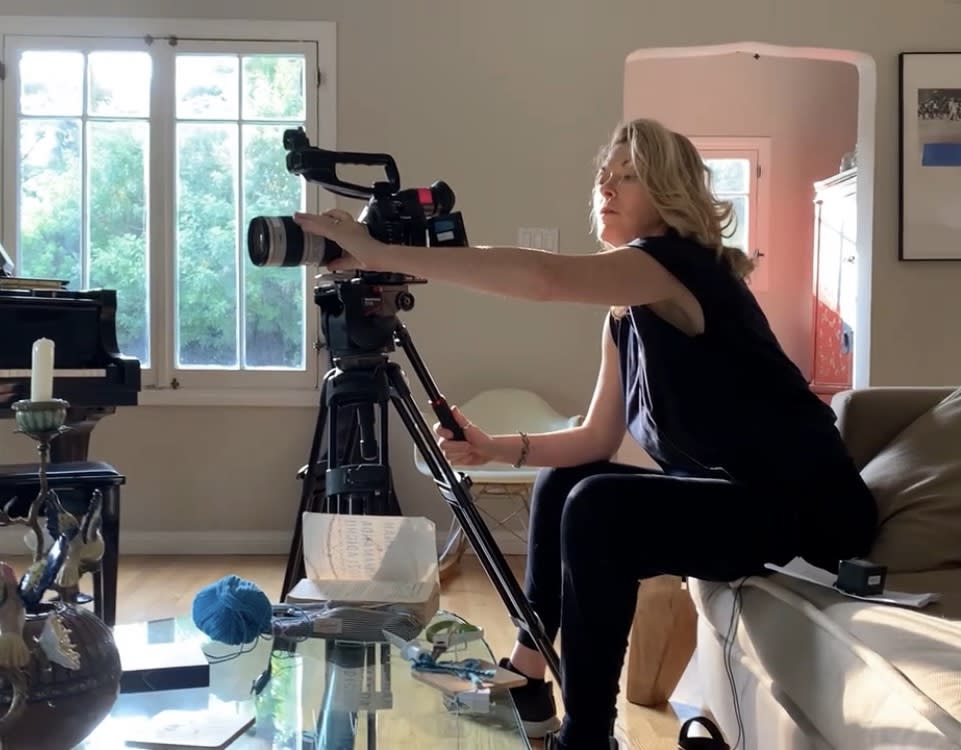How a Family Keepsake Evolved Into One of the Most Moving Films About Death Ever Made

Ondi Timoner didn’t know she was making a film when she began work on “Last Flight Home”; she simply wanted to document her father Eli’s last days as a record for her and her family. Due to debilitating health issues, Eli had decided that he would rather die than be a burden to his family and took advantage of California’s compassionate care laws to end his life on his own terms and his own schedule. After she got over her initial shock, the “DIG!” and “We Live in Public” director set up cameras in her parents’ home and, with their permission and the permission of her siblings, began filming. “It was totally for personal use,” Timoner told IndieWire. “It was not going to be a film. I set up these cameras just for our family’s archive and to capture Daddy’s voice and personality and bottle it up.”
Timoner’s goal was to make the cameras as invisible as possible, and even she forgot they were there most of the time. “It felt like for the first time, after all of these years of making films, filmmaking was there for me,” she said. “It was there as a safety blanket. I knew that I wouldn’t lose Daddy totally.” No one was operating the DSLR cameras but Timoner, who placed them at vantage points where they could capture the drama without interfering with it. She also had a surveillance camera in place that captured some key moments for the final film. “I had that camera because I knew I was going to be in shock and I wasn’t going to pay attention to the filmmaking process, and I wanted to make sure I knew what was happening in the chronology. Thank God, because the cameras often ran out of batteries and the mics would die, so when it came to making a film later, that moment where Dad calls [my mother] to his bed, the only camera was that surveillance camera.”
More from IndieWire
'Last Flight Home' Review: A Powerful Case for the Right to Die
'Bros' Director Nicholas Stoller on 6 Keys to Directing a Successful Rom-Com
The decision to turn her footage into a feature film for public consumption began when Timoner’s sister Rachel asked her to cut together a video for their father’s memorial. What was intended to be a five or 10-minute clip reel became a 32-minute film, as Timoner realized how much wonderful material she had. “The magic of film had never impacted me like that,” she said. “I never realized the power of it until that moment when suddenly dad’s alive in the AVID. And add to that, he’s not suffering anymore and I don’t have to worry about him being in pain. He’s where he wants to be and I get to laugh with him and cry with him, and there were all sorts of moments in that footage that somehow I missed. There’s something about the observational eye of the camera that allowed me to just watch these scenes unfold.”
Listen to the entire discussion below or read on for excerpts from the conversation. To hear this and more conversations with your favorite TV and film creators, subscribe to the Toolkit podcast via Apple Podcasts, Pocket Casts, Spotify, or Overcast.
Timoner was moved to see how strongly people responded to the video at the memorial, and realized that there might be a larger purpose to her footage — that she could make a film that not only celebrated her father but helped people understand and deal with mortality, and that explained in personal, human terms the necessity for compassionate choice laws. She returned to the editing room and the movie quickly took shape. “I couldn’t stop editing because Dad was right there,” she said. “I would go to my office and spend time with him — nights, weekends, everything — and the film just sort of flew through me. It was as if I was channeling it more than making it. It was like I instinctively knew every shot — what should be in, what should be out. It was the most streamlined process.”
The director showed an early – and extremely rough – cut of the movie at the Sidewalk Film Festival as a secret screening with no advance publicity, just to see whether it was working or if it was so personal that it wouldn’t mean anything to anyone else. The audience was deeply moved by Eli’s story, and Timoner knew she had something special. “The thing that struck me the most is that there were these two or three boys in the back, they were like 20 years old,” Timoner said. “They had no idea what they were going to see that day. And they said, ‘We now have a man that we can aspire to be like.’ And I thought, ‘Oh my gosh, I need to finish this.'” Timoner still plans to direct a dramatic feature about her father that she has been working on for years (a goal that has only been energized by the experience of making her documentary), but in the meantime “Last Flight Home” serves as a remarkable celebration of a remarkable man — and one of the most enlightening, devastating, and beautiful meditations on mortality in the history of cinema.
The Filmmaker Toolkit podcast is available on Apple Podcasts, Spotify, Overcast, and Stitcher.
Best of IndieWire
Sign up for Indiewire's Newsletter. For the latest news, follow us on Facebook, Twitter, and Instagram.

